Most Commonly Encountered snakes about Brisbane
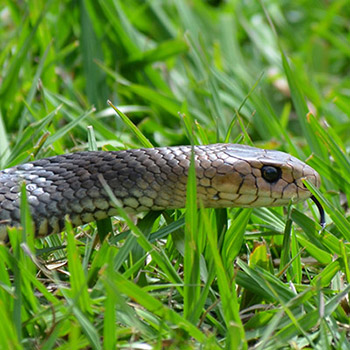
Eastern Brown snake
Eastern Brown snake
Highly Venomous
Bites from this species have caused human fatalities. In fact the Eastern Brown Snake accounts for more fatalities than any other Australian Snake. A nervous, ready biter it will defend itself if threatened. Maintains a strong defensive “S” shaped posture. The second most toxic land snake in the world and the most venomous in South East Queensland. Bites from this species should be treated immediately and attended to with correct first aid.
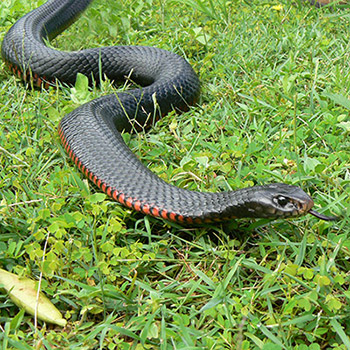
Red-bellied Black snake
Red-bellied- Black snake
Highly Venomous
Reclusive disposition but will inflate and flatten the body and neck in an effort to intimidate a perceived aggressor. Its supposed fearsome reputation is well exaggerated.
Uniform glossy black above along whole body except tip of snout which is paler brown. Belly has red or pink flush, brighter on the sides & paler in the middle. Hind edge of belly-scales is black, creating an even red & black striped appearance.
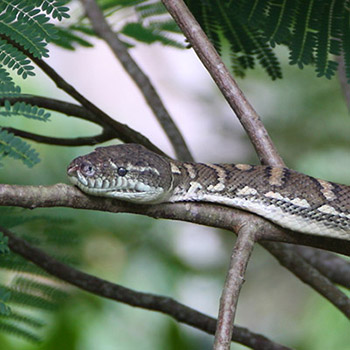
Coastal Carpet python
Coastal Carpet python
Non Venomous
Bites may cause substantial lacerations or punctures.
Large, heavy bodied snake with a highly variable, mottled & blotched pattern and colour. Mostly white to cream on the underside. Head is distinct from the neck. Deeply pitted scales (infralabials) along bottom jaw and to a lesser extent the upper jaw (supralabials) with small “granular scattered scales on top of the head.
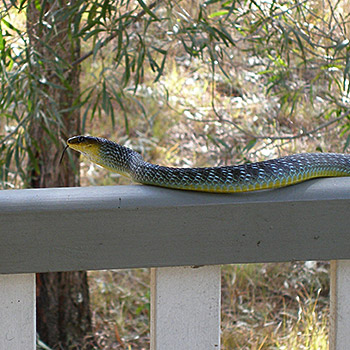
Common Tree snake
Common Tree snake
Non Venomous
Inoffensive, will emits a strong odour from the cloaca if handled firmly.
Sleek slender body with long, very thin tail. Distinctive ridge extends along outer edges of belly. Wide colour ranges from green, olive, brown & black to rare blue-grey on upper body. Belly yellow or creamy, with bright yellow present on throat. Some specimens with blue or grey belly but generally maintain the yellow coloration.
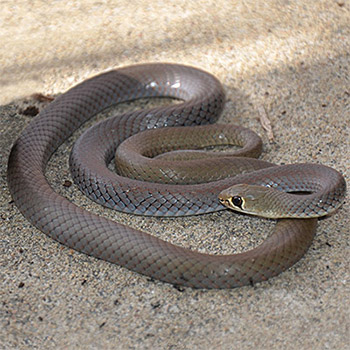
Yellow-faced Whip snake
Yellow-faced Whip snake
Potentially Dangerous
A small to medium sized snake that is quick to flee at the first sign of a threat. Bites are usually only received where direct contact is made with the snake. It is a mildly venomous snake species that, in the case of small children, the elderly or those presenting with an anaphylactic response to its venom may be potentially dangerous. Bites generally involve localised pain and swelling
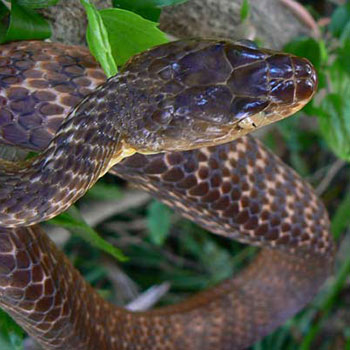
Brown Tree snake
Brown Tree snake
Weakly Venomous
An elusive species within suburban areas, that when provoked will present a spectacular defensive display. The forebody is raised off the ground in a classic “S” posture and is often coupled with striking if intimidated.
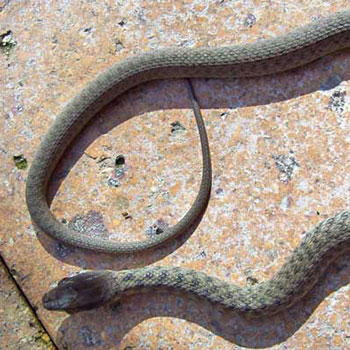
Keelback
Keelback
Non Venomous
Reluctant to bite but will if handled firmly. Generally strikes with mouth closed. Emits a strong odor from the cloaca if handled firmly.
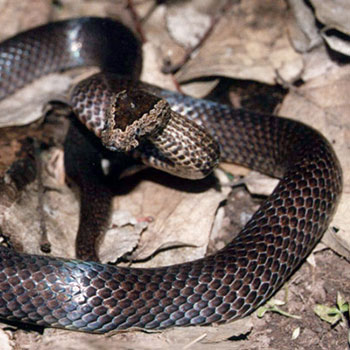
Golden Crowned snake
Golden Crowned snake
Weakly Venomous
All crowned snakes are reluctant biters. They will rear up in bluff display & may ‘mock strike’ with mouth closed. The Golden Crowned is the largest Crowned snake & will bite if highly provoked. As with any snake bite apply correct first aid and seek medical attention.
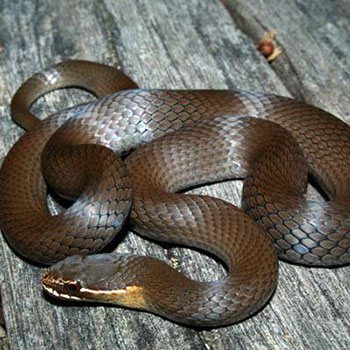
Marsh snake
Marsh snake
Mildly Venomous
Bites from this species have been known to cause severe local symptoms such as pain & swelling, with more general reactions such as headaches and nausea also recorded. All bites should still be treated immediately and attended to with correct first aid.
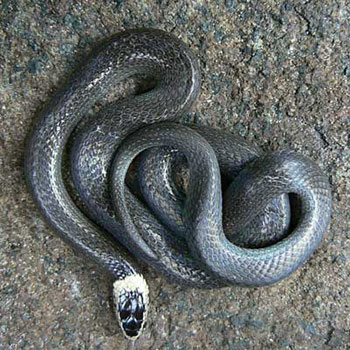
White Crowned snake
White Crowned snake
Weakly Venomous
Not considered dangerous to humans. All crowned snakes are reluctant biters, relying more on bluff display than bite. They are weakly venomous and have tiny mouths and short fangs. They will generally rear up & ‘mock strike’ with mouth closed, more of a ‘head butt’. If bitten, as with any snake bite, apply correct first aid and seek medical attention.
